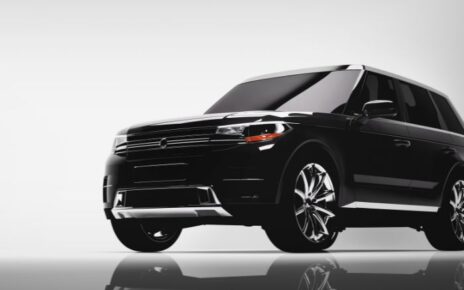Selecting the right bicycle is a pivotal decision that significantly influences your cycling experience. Whether you’re an avid cyclist or a beginner exploring the world of bikes, finding the perfect bicycle for men requires careful consideration of various factors. This comprehensive guide aims to provide valuable insights into the essential elements to contemplate when choosing a bicycle, ensuring that men can make an informed decision based on their preferences and riding goals.
Identifying Your Riding Style
a. Road Bikes for Speed Enthusiasts: If your passion lies in covering long distances on smooth roads and clocking high speeds, a road bike may be the ideal choice. These bikes are characterized by lightweight frames, thin tires, and a dropped handlebar design that promotes an aerodynamic riding posture.
b. Mountain Bikes for Off-Road Adventures: For those drawn to the thrill of off-road trails and rugged terrains, a mountain bike is the go-to option. These bikes feature sturdy frames, wide and knobby tires for enhanced grip, and a robust suspension system to absorb shocks on uneven surfaces.
c. Hybrid Bikes for Versatility: If you’re seeking a versatile option that can handle a mix of terrains, consider a hybrid bike. These bikes combine features of road and mountain bikes, offering a comfortable riding position, medium-width tires, and the ability to handle both paved and unpaved surfaces with ease.
d. City and Commuter Bikes for Urban Travel: City and commuter bikes are designed for urban environments, providing a comfortable upright riding position and practical features like fenders, racks, and lights. They are ideal for daily commuting, errands, and casual rides around the city.
Understanding Bike Frame Materials
a. Aluminum Frames for Lightweight Performance: Aluminum frames are popular for their lightweight nature, making them an excellent choice for riders who prioritize speed and agility. Modern aluminum frames offer impressive strength and durability, ensuring a responsive and efficient ride.
b. Steel Frames for Comfort and Durability: Steel frames are known for their durability and ability to absorb road vibrations, providing a comfortable ride. While slightly heavier than aluminum, steel frames offer a smooth and stable cycling experience, making them suitable for various riding styles.
c. Carbon Fiber Frames for Performance: Carbon fiber frames are synonymous with high-performance cycling. These frames are incredibly lightweight and offer excellent strength-to-weight ratios. Carbon fiber absorbs road vibrations, providing a smooth ride, making it a preferred choice for competitive cyclists.
d. Titanium Frames for Durability and Comfort: Titanium frames strike a balance between durability and comfort. They are corrosion-resistant, lightweight, and known for their longevity. Titanium frames provide a comfortable ride, making them suitable for long-distance cycling.
Choosing the Right Size
a. Consider Your Height: The size of the bicycle is crucial for a comfortable and efficient ride. Measure your inseam and match it with the bike size chart provided by manufacturers. Riding a bike that is the right size ensures proper posture, pedaling efficiency, and control.
b. Test Ride for Comfort: If possible, test ride different sizes and models before making a decision. The comfort of the ride is subjective, and a test ride allows you to assess factors like reach, handlebar height, and saddle comfort.
c. Consult a Professional: If you’re uncertain about the right size, consider consulting with a bike shop professional. They can provide expert guidance based on your measurements, preferences, and intended use.
Gearing System for Efficiency
a. Single-Speed Bikes for Simplicity: Single-speed bikes are straightforward and easy to maintain. They are ideal for flat terrain and short commutes. The lack of gears simplifies the riding experience but may limit the bike’s versatility on varied terrains.
b. Multi-Speed Bikes for Varied Terrain: Bikes with multiple gears offer versatility, allowing riders to navigate a range of terrains comfortably. Consider the number of gears based on your intended use—more gears provide a wider range for tackling uphill climbs and speeding on flat roads.
c. Internal Hub Gears for Low Maintenance: Internal hub gears are enclosed within the rear hub, offering low maintenance and a clean aesthetic. They are an excellent choice for riders who prefer a simple, reliable gearing system with minimal external components.
Brake Systems for Safety
a. Rim Brakes for Lightweight Bikes: Rim brakes, including caliper and cantilever brakes, are common on lightweight road bikes. They provide effective stopping power and are relatively easy to maintain.
b. Disc Brakes for All-Terrain Control: Disc brakes, both mechanical and hydraulic, offer superior stopping power and control, especially in wet or challenging conditions. They are common on mountain bikes and are increasingly popular on road and hybrid bikes.
c. Consider Your Riding Conditions: Choose a brake system that aligns with your riding conditions and preferences. Disc brakes are favored for off-road and all-weather riding, while rim brakes are suitable for smooth, dry surfaces.
Wheel Size and Tire Width
a. 26-Inch Wheels for Agility: Common on mountain bikes, 26-inch wheels provide agility and responsiveness, making them suitable for technical off-road trails. They are also found on some hybrid and city bikes.
b. 27.5-Inch Wheels for Versatility: A compromise between 26-inch and 29-inch wheels, 27.5-inch wheels offer a balance of agility and stability. They are commonly found on mountain bikes designed for varied terrain.
c. 29-Inch Wheels for Stability: Larger 29-inch wheels provide stability and roll over obstacles more easily, making them popular on mountain bikes designed for cross-country and trail riding. They offer a smoother ride on rough terrain.
d. Consider Tire Width: Wider tires offer increased comfort and stability, especially on uneven surfaces. Road bikes typically have narrower tires for reduced rolling resistance, while mountain and hybrid bikes may have wider tires for better traction.
Budget Considerations
a. Determine Your Budget Range: Establish a realistic budget range based on your cycling goals and preferences. Bicycles come in a wide price range, and determining your budget early in the process helps narrow down options.
b. Consider Long-Term Costs: In addition to the initial purchase price, consider potential long-term costs such as maintenance, upgrades, and accessories. Investing in a quality bike may lead to a more satisfying and cost-effective experience over time.
Conclusion
Choosing the right bicycle for men involves a thoughtful consideration of factors such as riding style, frame materials, size, gearing system, brakes, wheel size, budget, and any specialized requirements. By understanding your preferences and intended use, you can make an informed decision that aligns with your cycling goals. Whether you opt for a road bike, mountain bike, hybrid, or a specialized bicycle, the comprehensive guide provided here serves as a valuable resource to ensure that you choose the perfect companion for your cycling adventures. Pedal into the world of cycling with confidence, knowing that the right bicycle for men awaits your discovery.




